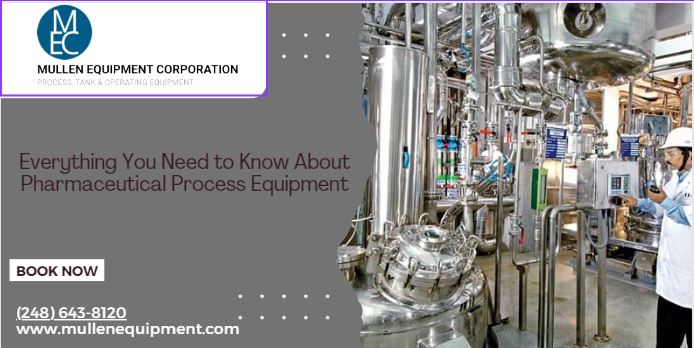Pharmaceutical process equipment plays a vital role in the manufacturing of pharmaceutical products, ensuring the production of safe and effective medications. Here's an overview covering key aspects of pharmaceutical process equipment:
- Types of Pharmaceutical Process Equipment:
Mixers:
Mixing equipment is essential for blending various pharmaceutical ingredients uniformly. Common types include ribbon blenders, paddle mixers, and high-shear mixers.
Granulators:
Granulators are used to break down powder blends into granules. They are crucial for the formulation of tablets and other solid dosage forms.
Tablet Presses:
Tablet presses compress granulated powder into tablets of specific sizes and shapes. They are a fundamental component in tablet manufacturing.
Capsule Fillers:
Capsule filling machines are used to encapsulate powdered or liquid pharmaceutical formulations. They ensure accurate dosing and product consistency.
Coating Machines:
Coating equipment is used for applying coatings to tablets or other pharmaceutical forms. This can enhance stability, control release, or improve taste.
Fluid Bed Dryers:
These dryers are used to remove moisture from pharmaceutical powders or granules using a fluidized bed of hot air.
Autoclaves/Sterilizers:
Autoclaves are crucial for sterilizing pharmaceutical equipment, containers, and production environments to maintain product safety.
Lyophilizers (Freeze Dryers):
Freeze dryers remove water from pharmaceutical products, preserving their stability and extending shelf life.
Filtration Equipment:
Filtration systems are employed to separate particles from liquids or gases, ensuring the purity of pharmaceutical products.
Packaging Equipment:
Packaging machines handle the final stage of pharmaceutical production, ensuring proper containment, labeling, and sealing of the products.
- Material of Construction:
Pharmaceutical equipment is typically constructed from materials that meet stringent hygiene and safety standards. Common materials include stainless steel, glass, and certain polymers that are resistant to corrosion and easy to clean.
- Compliance with Regulations:
Pharmaceutical process equipment must adhere to strict regulatory requirements, including Good Manufacturing Practices (GMP) and other industry-specific standards. Compliance ensures the production of pharmaceuticals that meet quality and safety standards.
- Validation and Qualification:
Equipment used in pharmaceutical manufacturing undergoes validation and qualification processes to ensure that it consistently produces products of the desired quality. This involves documented evidence that the equipment operates according to predefined specifications.
- Cleaning and Sterilization:
Cleaning and sterilization procedures are crucial in pharmaceutical manufacturing to prevent cross-contamination and ensure product safety. Equipment should be designed for easy disassembly and cleaning.
- Automation and Control Systems:
Many pharmaceutical processes utilize automated systems and control technologies to ensure precision, consistency, and adherence to specified parameters.
- Maintenance and Calibration:
Regular maintenance and calibration of pharmaceutical equipment are essential to prevent malfunctions, ensure accuracy, and prolong equipment lifespan.
- Integration with Process Analytics:
Some advanced pharmaceutical process equipment integrates with process analytics, allowing for real-time monitoring and control of critical parameters.
- Continuous Manufacturing:
The pharmaceutical industry is increasingly adopting continuous manufacturing processes, and equipment designed for continuous production is becoming more prevalent.
- Emerging Technologies:
Ongoing advancements in pharmaceutical manufacturing include the adoption of technologies such as 3D printing for personalized medicine and the use of advanced analytics for process optimization.
In conclusion, pharmaceutical process equipment is a diverse and critical component of drug manufacturing. Its design, material selection, compliance with regulations, and integration with quality control measures are all crucial factors in ensuring the production of safe and effective pharmaceutical products.


No comments yet